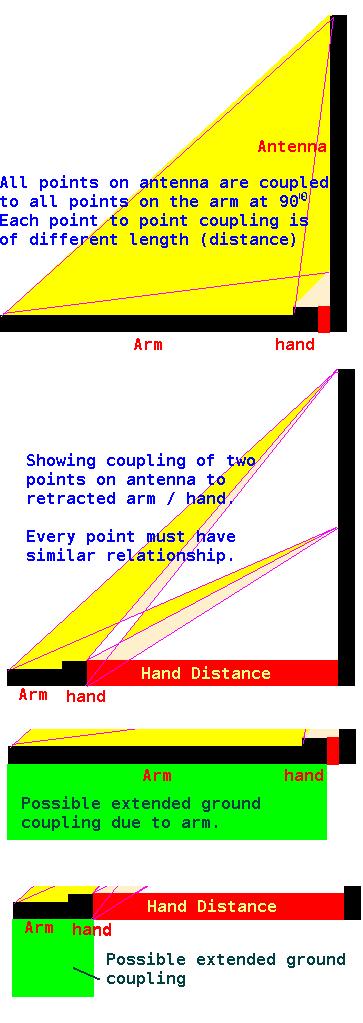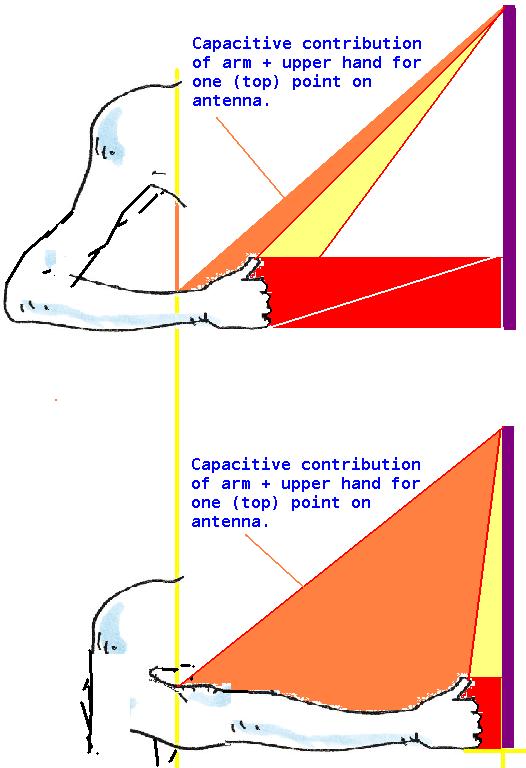Christopher, PCH sounds interesting and I would like to see an application of it, but IMO the combination of proximity/capacitance is what makes a theremin a theremin. The versatility that a player can develop with a theremin is a result of 'change in capacitance' being the main variable. this means there are many ways to achieve the same change in frequency. Different fingering/hand/arm motions can be called upon in the performance of music, that offer the player a means to be efficient.
perhaps I've partly misunderstood your description. I think a 'proximity only' interaction can be useful in some situations, if someone were to want to move only the arm... but for myself, in order to be versatile and efficient on the theremin, the capacitance variable is a requirement.
dewster, I think I have to elaborate a little more about what's happening with this external portion of the equation that I've described.
I conducted an experiment that ended up yielding some pretty interesting results. I bought a spool of conductive thread (silver coated nylon thread...it was for another application, not originally having anything to do with this pitch linearity study) I unwound approx 1.5 meters of the thread, did NOT cut it, left the spool on the ground, tied the loose end to the pitch arm on my etherwave pro about 2 inches from the point where the antenna extends... my instrument was tuned the way it normally is, for my normal desired playing range/interval size. I stayed in my normal position, but with my pitch hand/arm resting to the side of my body. The resulting pitch was very high in frequency in the highest octave of the ePro range.
the experiment proves one thing: that the total surface area of the conductive thread (the thread left on the spool sitting on the floor) had an effect on the resulting capacitance value... I'm sure this sounds perfectly logical, but a spool of conductive thread is not a human hand/arm/body. when the proximity of the fingertips (the closest appendage to the antenna) changes, so does the proximity of the arm (which is also within range of the pitch field)... which creates a new equation at every place along the pitch range because a human arm does not offer a linear distribution of surface area as it is extended/retracted. It can however, depending on the awareness of the player, be moved in such a fashion where there is a mostly linear change in capacitance... but that variable is up to each player. I make it a point in my technique to always move my hand in a straight line from my body to the central point of the pitch antenna.
This external equation not only changes based on the shape of a players arm and how he/she moves it, but it is also affected by what location along the vertical antenna the player chooses to approach.
I would bet that if anyone took measurements while approaching a the top of the antenna, the results would greatly differ from measurements take with the hand approaching the antenna base or center point.
The point I wish to make is that if the guy measuring changes in capacitance does not include his own body's non linear distribution of surface area (and how he chooses to move his arm) into the equation, then there are variables being left out, and a graph of plotted measurements can only be useful in the closed system from which the measurements were taken. each different person would create a different graph.
I hope I haven't lost anyone. I don't intend to undermine the intelligence of anyone here, but i get the impression that there are significant variables that are not being brought into question, not only by engineers, but theremin players also. please prove me wrong if you believe I am mistaken.
my personal philosophy of improving on/with the theremin is very simple. it's awareness. if I am aware of all the variables, then there is a greater possibility of working around the various shortcomings of the instrument. Not everything can be controlled by the player at all times, but a great majority of the variables can be tamed once they are understood.
what one person perceives to be freakish ability, another person perceives to be extensive methodical/practical study and immeasurable amounts of trial and error.



